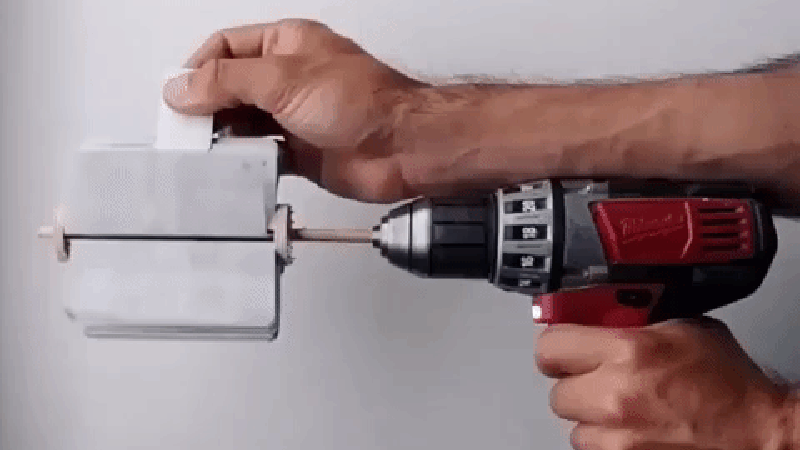[WolfCat] of Wolfcatworkshop is creating a hand-animated split-flap animation. But what do you use to test your animation once it’s on the split-flaps? Well, to test it out, [WolfCat] used a drill to give it motion. DoodlersAnonymous has some pics and an interview with [WolfCat] about his animation and there are some pictures on his Instagram page.
Technically, what [WolfCat] wanted to make is a “mutoscope,” a hand-cranked precursor to the movie projector that had its heyday in the late 19th and early 20th century. Originally installed in penny arcades and the like, mutoscopes were single-viewer apparatus. The viewer cranks the handle and the animated cards inside rotate around, stopped briefly by a bit of metal at the top in order to show a frame. The basic idea is similar to the way split-flap clocks or signs work.
[WolfCat] hand drew the animation for his movie and then scanned and printed out each frame. The frames were then transferred to a pair of flaps. [WolfCat] wanted to see how it would look when animated, but didn’t have any plans at the time for a case or a hand crank, so he found the closest tool that would do the job – a cordless drill. Attaching the drill and using a bit of card or wood as a stopper, [WolfCat] could see how the end result would look and could then start work on the case and crank.
The drill is a quick and easy way to see what the finished product would look like. Once he’s got it working, [WolfCat] could check out this 3D printed mutoscope case, or this flip dot animated display.















Gettin’ real tired of these enormous animated GIFs. Y’all declare , why not act like it?
Er, y’all declare <!DOCTYPE html>, that is. Silly comment form, removing tags it doesn’t have in its whitelist instead of escaping them.
I like the anti-gif bot on reddit: https://www.reddit.com/user/anti-gif-bot/
Right click image > block image with adblock plus
edit regular expression wild card:
https://hackaday*.com/*.gif?w=800
Shove your dial-up ideology some place special.
Not so much dial-up as just wanting actual HTML5 video instead of crappy formats from the 90s that were never meant to be used to hold videos taken by cameras, and aren’t so much as halfway decent at it.
I love that the British term for this is What The Butler Saw, the title of an early porn.
3 mb gif that could’ve taken life as a 500k Webm, OMFG WTF FFS LOL.
Even with a decent connection etc this is just piss poor effort slap hashery.
Replace the drill with a stepper motor and you have the ability to do physical “Flip-Book Compression” (FBC). When the images on the pages move more, they “flip” faster, otherwise they flip slower. This means you will need significantly less pages in your flip book (data compression). Of-course, this will require a micro-controller and some programming, but nothing that your typical “Maker” can do these days. A young “Maker” should do a project called Flip-Book-Compression (FBC), and win some sort of HaD prize!
Thank you! I’ve been a Hackaday reader/lurker for years and I would have never imagined I’d be featured here.
You just made my day.